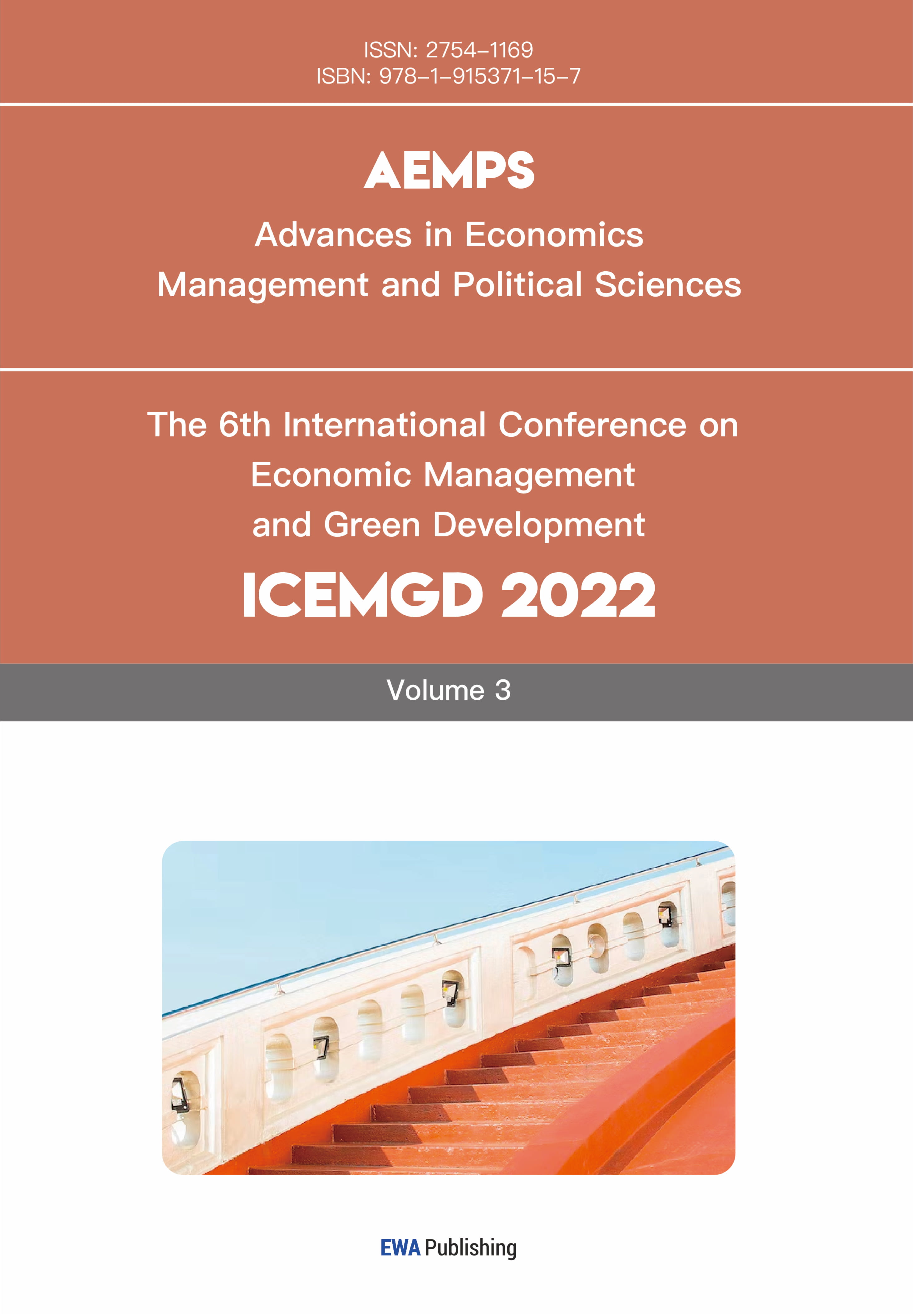References
[1]. Kemp, S. (2023, February 9). Digital 2023: China [Report]. DataReportal. https: //datareportal.com/reports/digital-2023-china
[2]. Xinhua News. (2023, August 28). China's internet users total 1.079 bln with vibrant digital infrastructure, internet app growth. State Council of the People's Republic of China.
[3]. Toffoletti, K., Ahmad, N., & Thorpe, H. (2022). "Critical Encounters with Social Media in Women's Sport and Physical Culture, " in Sport, Social Media, and Digital Technology (Vol. 15), Emerald Publishing Limited.
[4]. AlAfnan, M. A. (2024). Social Media Personalities in Asia: Demographics, Platform Preferences, and Behavior Based Analysis. Studies in Media and Communication, n. pag.
[5]. Kahneman, D. (2011). Thinking, fast and slow. Farrar, Straus and Giroux.
[6]. Link, B. G., & Phelan, J. C. (2001). Conceptualizing stigma. Annual Review of Sociology, 27(1), 363-385. https: //doi.org/10.1146/annurev.soc.27.1.363
[7]. Jones et al.(1984). Social stigma: The psychology of marked relationships. W.H. Freeman and Company.
[8]. Ahmedani, B. K. (2011). Mental Health Stigma: Society, Individuals, and the Profession. Journal of Social Work Values and Ethics, 8(2), 41-416. PMID: 22211117; PMCID: PMC3248273.
[9]. Major, B., Dovidio, J. F., Link, B. G., & Calabrese, S. K. (2020). Theoretical Models to Understand Stigma of Mental Illness. In The Cambridge Handbook of Stigma and Mental Health. Cambridge University Press. Available from [https: //www.cambridge.org/core/books/abs/cambridge-handbook-of-stigma-and-mental-health/theoretical-models-to-understand-stigma-of-mental-illness/8437D63FA64D4C148789EB4A7DBED600](https: //www.cambridge.org/core/books/abs/cambridge-handbook-of-stigma-and-mental-health/theoretical-models-to-understand-stigma-of-mental-illness/8437D63FA64D4C148789EB4A7DBED600)
[10]. Glossenger, D., & Cowell, A. (2021). Equity and Ability Grouping: A Study of Whole-School Practices and Reflections on Vocal Music Education.
[11]. Manzo, G. (2023). Stigmatization in Mental Health: A Systematic Review. Journal of Clinical Psychiatry, 84(2), 8969461. [https: //www.ncbi.nlm.nih.gov/pmc/articles/PMC8969461/](https: //www.ncbi.nlm.nih.gov/pmc/articles/PMC8969461/)
[12]. Gray, D. M., & Smoczynski, A. (2024). Stigma: Advances in Theory and Research. Advances in Social Work, 24(1), 235349425. Available from [https: //www.researchgate.net/publication/235349425_Stigma_Advances_in_Theory_and_Research](https: //www.researchgate.net/publication/235349425_Stigma_Advances_in_Theory_and_Research)
[13]. National Research Council (US) Committee on the Science of Adolescence. (2011). The Science of Adolescent Risk-Taking: Workshop Report. National Academies Press (US). Available from [https: //www.ncbi.nlm.nih.gov/books/NBK384923/](https: //www.ncbi.nlm.nih.gov/books/NBK384923/)
[14]. Link, B. G., & Phelan, J. C. (2013). Labeling and Stigma. Handbook of the Sociology of Mental Health, 525–541. [https: //doi.org/10.1007/978-94-007-4276-5_25](https: //www.ncbi.nlm.nih.gov/pmc/articles/PMC3666955/)
[15]. Pescosolido, B. A., & Martin, J. K. (2019). The Stigma Complex. BMC Medicine, 17(1), 216. [https: //doi.org/10.1186/s12916-019-1271-3](https: //bmcmedicine.biomedcentral.com/articles/10.1186/s12916-019-1271-3)
[16]. Quinn, D. M., & Earnshaw, V. A. (2011). Understanding Conceptualizations of Stigma in Conditions with Concealable Stigmatized Identities. Journal of Social Issues, 67(3), 493–507. [https: //doi.org/10.1111/j.1540-4560.2011.01712.x](https: //www.ncbi.nlm.nih.gov/pmc/articles/PMC3248273/)
[17]. Chaudoir, S. R., Earnshaw, V. A., & Andel, S. (2023). Disentangling the Psychological Impact of Stigma. Frontiers in Psychology, 14, 8900470. [https: //doi.org/10.3389/fpsyg.2023.8900470](https: //www.ncbi.nlm.nih.gov/pmc/articles/PMC8900470/)
[18]. Ge Ying. (2024). User Experience Evaluation of Online Platforms: A Case Study of Xiaohongshu APP. Statistics and Applications, 13(2).
[19]. Strauss, A., & Corbin, J. (1998). Basics of Qualitative Research: Grounded Theory Procedures and Techniques (2nd ed.). Sage Publications.
[20]. Guan Jian. (2007). The Conceptual Development of Stigma and the Construction of a Multidimensional Model.. Nankai Journal (Philosophy, Literature and Social Science Edition), (5)
[21]. Straton, N. (2022). COVID vaccine stigma: Detecting stigma across social media platforms with computational model based on deep learning. Applied Intelligence (Dordrecht), 1-26. Advance online publication. https: //doi.org/10.1007/s10489-022-04311-8
[22]. Tariuni, K., Musa, D. T., & Gaffar, Z. H. (2022). Komunitas Fujoshi di Pontianak dan Stigma Identitas Gender yang Melekat dalam Lingkungan Masyarakat. Balale' : Jurnal Antropologi, n. pag.
[23]. Rathje, S., Robertson, C., Brady, W. J., & Van Bavel, J. J. (2023). People Think That Social Media Platforms Do (but Should Not) Amplify Divisive Content. Perspectives on Psychological Science. Advance online publication. https: //doi.org/10.1177/17456916231190392



